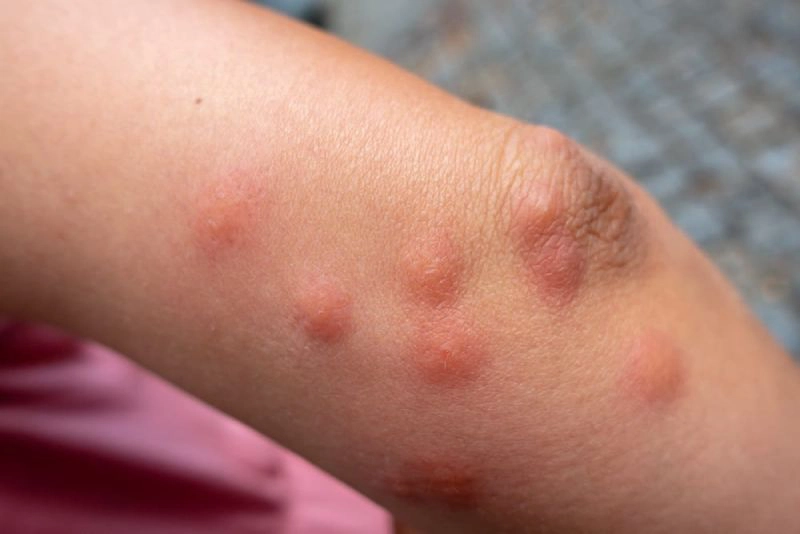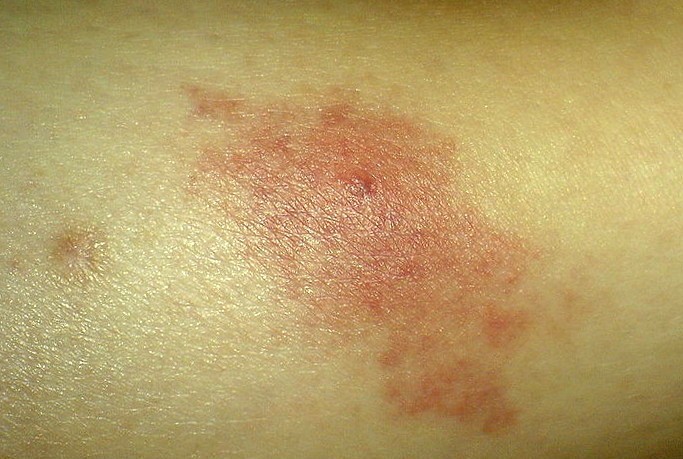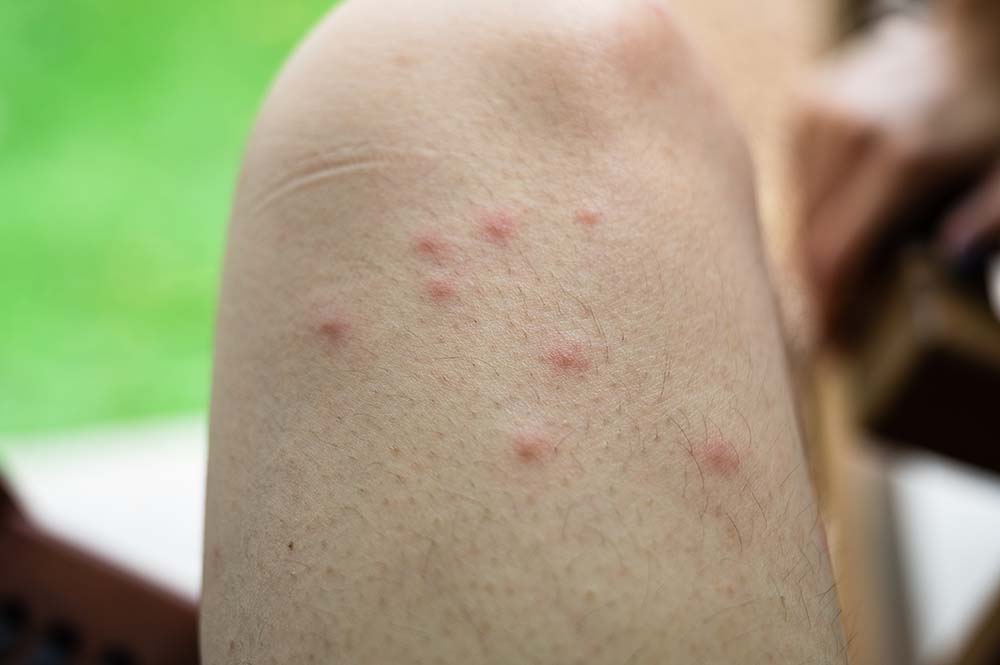No, termites do not bite humans. They primarily feed on cellulose-based materials such as wood and do not possess the mouthparts or behavior to bite humans or other animals.
Termites are small, wood-eating insects that belong to the order Isoptera. They play a vital role in ecosystems by breaking down decomposing plant material.
Despite their notorious reputation for causing extensive damage to wooden structures, termites do not threaten humans in terms of biting or inflicting physical harm.
The common belief about termite behavior of biting is a misconception. Termites feed on cellulose-based materials, not human flesh, and prefer to remain hidden in their colonies.
Do termites bite humans?
Termites are not known to bite humans. They primarily feed on cellulose-based materials like wood, paper, and plants.
Let’s Understand the Termite Behavior

A. Clarifying the Misconception that Termites Bite Humans
Termites do not bite humans, and understanding this misconception requires recognizing the differences between termites and other biting insects.
The Differences between Termites and Other Biting Insects:
Termites possess mandibles designed for breaking down cellulose, found in wood and plants, as their primary food source. On the other hand, biting insects like mosquitoes and bedbugs have unique mouthparts designed to puncture the skin and draw out blood or bodily fluids.
The Primary Purpose of Termite Mandibles:
The primary function of termite mandibles is to process cellulose-rich materials, not to bite or feed on humans. They lack the anatomical features and feeding behaviors necessary for biting humans, making termite bites impossible.
In summary, termites’ unique biology and feeding habits make them incapable of biting humans, dispelling the common misconception surrounding termite bites.
Uncovering Termite Attack Behaviors
A. Termite aggression towards other creatures
Termite Defense Mechanisms
Termites are not naturally aggressive towards other creatures but have defense mechanisms. Termites use their mandibles to block tunnels when threatened, protecting their colonies from predators like ants.
B. Case Studies of Termite Attacks
Case Study 1: Termites vs. Ants
In a suburban backyard in Florida, homeowners reported witnessing an intriguing battle between termites and ants. The incident occurred during a rainy season when both termite and ant colonies were active. Termites, often considered less aggressive than ants, were observed defending their territory against invading ants.
Behavior Observed: The termite colony, sensing the intrusion of ants near their nest, launched a defense mechanism. Termite soldiers, identifiable by their larger heads and mandibles, formed a protective barrier using their mandibles, blocking the tunnel entrances to the nest.
Outcome: Despite their smaller size, ants retreated after encountering the formidable defense of the termite soldiers. The termite colony successfully protected its nest, illustrating the territorial nature of termites.
Case Study 2: Termite Nest Invasion
In a rural area of Australia, a homeowner reported an unusual termite infestation that led to damage to their property. In this case, the termites displayed aggressive behavior when their nest was inadvertently disturbed.
Behavior Observed: The homeowner accidentally disturbed a termite nest while landscaping. In response to this disturbance, the termites became highly agitated.
Worker termites, armed with mandibles adapted for chewing wood, swarmed in an attempt to defend their nest.
Outcome: The homeowner experienced termite bites as a result of the aggressive response from the colony.
While termites were primarily focused on protecting their nest, their bites caused discomfort and prompted the homeowner to seek professional pest control assistance to manage the infestation.
These case studies highlight that while termites are not naturally aggressive toward humans, they can display territorial and defensive behavior when their colonies are threatened.
Termite biting behaviors within their communities
Termite Communication and Interaction
- Termites rely on mandibles for communication and interaction within their colonies. They use mandibles to groom each other, exchange food (trophallaxis), and convey signals.
- This communal interaction helps maintain colony cohesion and ensure the well-being of its members.
The Importance of Mandibles in Nest Building
- Mandibles play a crucial role in termite nest building. Termites use their mandibles to collect wood particles and mix them with saliva, creating a strong, paper-like material for constructing intricate nests.
- Without mandibles, the elaborate architecture of termite colonies would not be possible.
In summary, termites primarily use their colonies’ mandibles for defense, communication, and nest construction.
While they can display aggression towards other creatures when provoked, their biting behaviors are primarily directed toward protecting their nests and ensuring the survival of their colonies.
The Reality of Termite Biting and Human Interactions
A. Investigating rare instances of termite bites on humans
Sharing documented cases of accidental human bites
There have been isolated cases where humans have experienced termite bites, albeit rarely. These incidents occur when humans inadvertently disturb termite colonies or handle infested materials without precaution.
Discussing potential reasons for these occurrences
These rare encounters can be attributed to a few key factors. First, termites might feel threatened if their nests are disturbed. Second,
When termites search for food or water, they might accidentally come into contact with humans, resulting in unintentional bites.
Also, improper storage or handling of wood-based materials infested with termites can lead to such incidents.
B. Providing Tips for Termite-proofing homes and structures.
To reduce the chance of termite problems and potential bites:
a. Keep Wood Away from Foundations: Termites are attracted to wood, so it’s essential to maintain a gap between wooden materials and your home’s foundation. Ensure firewood, lumber, and other wooden objects are stored at least 20 feet away from your house.
b. Proper Ventilation: Termites thrive in damp environments. Adequate ventilation in crawl spaces and attics can help reduce humidity levels, making these areas less appealing to termites.
c. Moisture Control: Fix any leaks or plumbing issues promptly. Termites are drawn to water sources, so eliminating excess moisture reduces the attractiveness of your home to them.
d. Seal Cracks and Crevices: Seal any cracks or crevices in the foundation, walls, and around windows and doors. This prevents termites from finding entry points into your home.
e. Termite-Resistant Building Materials: When constructing or renovating your home, consider using termite-resistant building materials like pressure-treated wood or steel framing, especially in vulnerable areas.
f. Regular Inspections: Conduct regular visual inspections of your home’s exterior, looking for mud tubes, damaged wood, or swarming termites. Early detection can prevent infestations from becoming severe.
What is the Importance of Professional Termite Inspections?

Professional termite inspections are crucial for the health and safety of your home. These inspections assist in finding termites, gauging the damage, and suggesting suitable treatment choices.
Termites can cause severe damage to structures, compromising the integrity of your property and posing potential risks for your family.
Let’s explore the importance of professional termite inspections for protecting my home and ensuring peace of mind.
a. Early Detection: Professional termite inspections are conducted by trained experts who know the signs of termite activity. They can identify subtle indicators that homeowners might miss, enabling early intervention.
b. Customized Solutions: Professionals can tailor treatment strategies to the specific infestation if termites are detected, ensuring a more effective eradication process.
c. Preventative Measures: Regular professional inspections can include preventative treatments, such as installing bait stations or applying chemical barriers, to protect your home from potential termite infestations.
d. Cost Savings: While professional inspections have a cost associated with them, they can ultimately save you money by preventing extensive termite damage that may require costly repairs.
e. Peace of Mind: Knowing that experts regularly inspect your home provides peace of mind, as you are actively taking steps to protect your property.
By following these tips for termite-proofing your home and emphasizing the importance of professional termite inspections, you can significantly reduce the risk of termite-related incidents and protect your home from potential damage.
FAQs
Can termites harm pets?
Termites generally do not pose a direct threat to pets. However, if pets ingest termites or wood that has been infested, it could potentially cause digestive issues.
Do termites carry diseases?
Termites don’t spread diseases to people or animals. They mainly pose a threat to buildings and wooden items.
What are the signs of a termite infestation?
Termite infestation signs: damaged wood, wall mud tubes, shed wings, small wood holes. Regular inspections are crucial for early detection.
How can I prevent a termite infestation?
Prevent termite infestations by reducing moisture around your home, fixing leaks, keeping firewood away from your house, and scheduling regular termite inspections.
Are there different types of termites?
Yes, there are several termite species, but the most common ones include subterranean termites, drywood termites, and dampwood termites, each with distinct behaviors and habitats.
What damage can termites cause to a home?
Termites can cause significant structural damage by tunneling through wood and weakening the overall integrity of a building. This can result in costly repairs.
How do termite treatments work?
Termite treatments vary but often involve chemical barriers, bait systems, or fumigation to eliminate or deter termite colonies from infested areas.
Can I treat a termite infestation on my own?
While DIY termite treatments are available, hiring a professional pest control service is usually best, as termites can be challenging to eradicate without expert knowledge and tools completely.
Are termites a year-round problem?
Termites can be active year-round in warmer climates, but in colder regions, they tend to be less active during winter. Nonetheless, termite prevention and inspections should be a year-round concern to catch infestations early.
Conclusion
In summary, termites do not bite humans as a natural behavior. While rare instances of termite bites exist, they are usually accidental and tied to specific circumstances.
While termite bites on humans are exceptionally rare and typically accidental, it is crucial to take preventive measures to avoid termite-related incidents. And share this newfound knowledge to help dispel the misconception surrounding termites.

